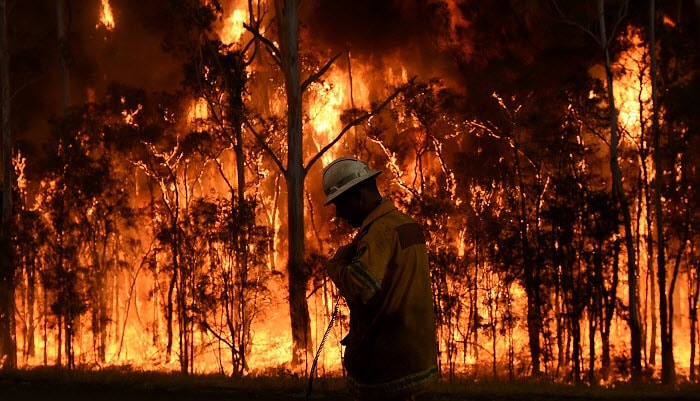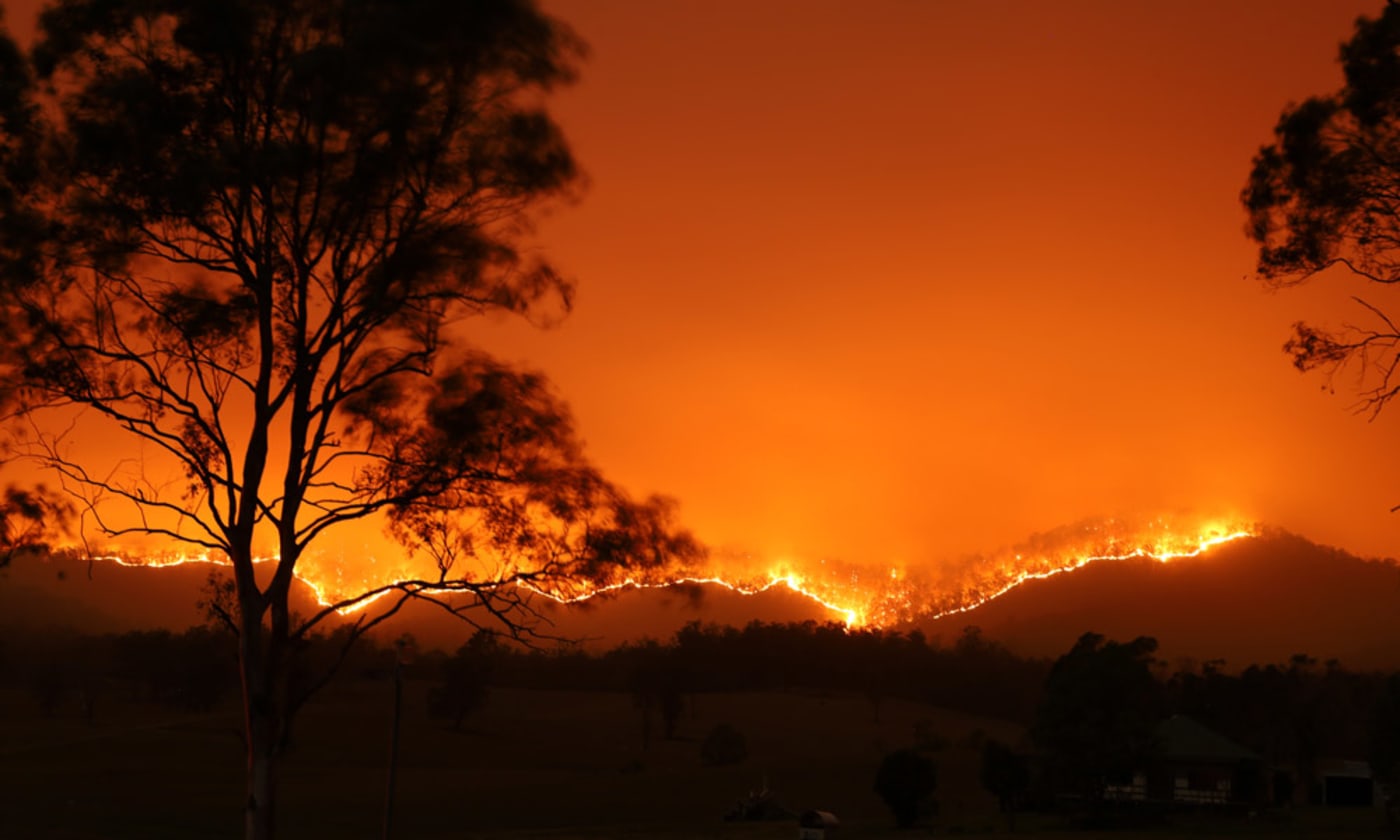BMP Basics: Guarding Your Property Versus Bushfire Risks
BMP Basics: Guarding Your Property Versus Bushfire Risks
Blog Article
Finest Practices in Bushfire Management for Comprehensive Fire Protection
In the realm of bushfire management, the pursuit for extensive fire security requires a precise technique that encompasses different critical aspects. From rigorous threat assessment and critical preparation to the implementation of reliable vegetation management techniques, the range of ideal practices is large and complex. Community interaction and education and learning play pivotal functions in promoting strength and readiness, while very early discovery and caution systems function as critical safeguards. The smooth control of emergency situation feedback and discharge strategies is important for guaranteeing the safety and wellness of individuals in the face of intensifying bushfire threats. As we navigate through the nuances of these ideal techniques, an expedition right into the detailed internet of methods and methods waits for, guaranteeing a much deeper understanding of the diverse landscape of bushfire monitoring for thorough fire defense.
Risk Analysis and Planning
In bushfire monitoring for fire security, the initial step entails carrying out a complete risk analysis and developing a detailed plan to alleviate potential dangers. Threat evaluation is a crucial procedure that entails identifying, assessing, and examining potential dangers that can result in a bushfire. This assessment takes into consideration various factors such as climate condition, topography, fuel load, and human tasks in the area. By comprehending these risks, fire security authorities can focus on locations that are most susceptible to bushfires and designate sources efficiently.
Complying with the danger analysis, the following crucial step is to develop a detailed plan to address the identified risks. This plan must lay out strategies for avoidance, readiness, feedback, and recuperation in the occasion of a bushfire. It needs to also include procedures for area communication, engagement, and evacuation procedures. By having a well-defined plan in position, emergency situation solutions can act promptly and successfully to secure lives, property, and the setting throughout a bushfire outbreak. Reliable risk assessment and preparation are essential components of bushfire monitoring for making sure extensive fire defense.
Vegetation Administration Strategies
After conducting a thorough danger analysis and developing a detailed strategy for bushfire administration, the emphasis changes to executing effective greenery monitoring strategies. Greenery monitoring plays an important duty in reducing the intensity and spread of bushfires. One vital method is developing defensible space around properties by removing combustible plant life and keeping a risk-free range between greenery and frameworks. This aids to develop a barrier zone that can slow the progress of a fire and supply a more secure setting for firefighters to defend residential properties.
In addition to producing defensible area, prescribed burning is an additional essential plant life administration approach. Suggested burns entail intentionally setting fires under controlled problems to lower the accumulation of fuel, decrease the possibility of high-intensity wildfires, and advertise ecological community wellness. By tactically shedding areas with excess plant life, gas degrees are decreased, making it harder for fires to spread out swiftly and uncontrollably.

Community Engagement and Education
Effective neighborhood involvement and education are necessary parts in constructing a positive and durable method to bushfire management. By involving community participants in the preparation and application of bushfire administration techniques, stakeholders become active participants in guarding their homes and areas. Area involvement promotes a sense of common obligation and equips residents to take possession of their safety and security.
Education plays a vital function in equipping individuals with the knowledge and abilities required to reduce bushfire risks effectively. Giving instructional sources on fire avoidance, discharge treatments, and the importance of early discovery can considerably boost neighborhood preparedness. In addition, informing homeowners on the regional bushfire environment, including fire habits and risk aspects, enables them to make enlightened decisions additional hints throughout high-risk scenarios.
Through continuous interaction and education efforts, areas can develop a collective understanding of bushfire threats and work collaboratively to lessen the impact of wildfires. By promoting a society of preparedness and durability, area members can improve their ability to respond properly to bushfire emergencies and secure both lives and building.

Early Discovery and Warning Systems
Area interaction and education act as foundational columns in developing proactive bushfire monitoring methods, laying the groundwork for the execution of robust very early discovery and caution systems. Early detection and warning systems are crucial elements in reducing the influence of bushfires on neighborhoods and the environment. These systems include a variety of modern technologies and methods aimed at determining and signaling authorities and locals to possible fire break outs promptly and efficiently.
One crucial element of early discovery systems is the usage of sophisticated surveillance technologies such as satellite images, drones, and climate stations to identify signs of prospective fire ignition. These modern technologies offer real-time information that can be assessed to identify fire-prone locations and cause early warnings. Furthermore, the assimilation of community-based monitoring networks and automated alert systems can improve the performance of early detection efforts by including homeowners in reporting potential fire risks and getting prompt warnings.
Effective early discovery and caution systems rely on a multi-faceted method that integrates technical technology, area involvement, and swift emergency reaction procedures to make certain the prompt and coordinated management of bushfire occurrences. By purchasing these systems and fostering cooperation between stakeholders, communities can improve their strength to bushfires and decrease the associated risks.
Emergency Reaction and Emptying Plans
A well-coordinated and comprehensive emergency situation action and emptying plan is important for effectively guarding lives and property during bushfire incidents. These strategies must be carefully crafted, thinking about variables such as the topography of the area, the density of plant life, and the prospective speed and instructions of the fire's spread.
One important aspect of an emergency situation reaction plan is the facility of clear communication networks to distribute timely and precise information to homeowners and emergency situation responders. This can consist of using alarms, mobile informs, social networks, and community conferences to guarantee that everyone is notified and knows what actions to take.
Evacuation courses must be pre-identified and regularly preserved to ensure they are easily accessible during emergency situations. Additionally, designated evacuation facilities ought to be developed to supply sanctuary, clinical support, and support services to evacuees.
Regular drills and workouts are crucial to acquaint residents with emptying procedures and examine the performance of the strategy. By continuously upgrading and examining emergency reaction and evacuation strategies, communities can boost their readiness and resilience in the face of bushfire threats.
Final Thought
To conclude, reliable bushfire management needs an extensive approach that includes threat assessment, greenery he said administration, area involvement, very early discovery systems, and emergency situation response strategies. By applying these best practices, areas can much better safeguard themselves from the terrible influences of bushfires - navigate to this website Bushfire Management Plan. It is vital to focus on aggressive actions to minimize the threats postured by bushfires and make certain the safety and security and health of individuals and communities in danger
After performing a thorough threat analysis and creating a detailed plan for bushfire management, the focus changes to carrying out efficient greenery management approaches.Reliable community engagement and education and learning are crucial elements in developing a positive and resilient strategy to bushfire administration. By involving area participants in the planning and execution of bushfire management approaches, stakeholders end up being active individuals in protecting their homes and neighborhoods.Community involvement and education offer as fundamental columns in developing proactive bushfire monitoring methods, laying the foundation for the application of durable early discovery and warning systems.In final thought, effective bushfire administration requires a thorough method that consists of threat evaluation, vegetation administration, area engagement, very early discovery systems, and emergency action plans.
Report this page